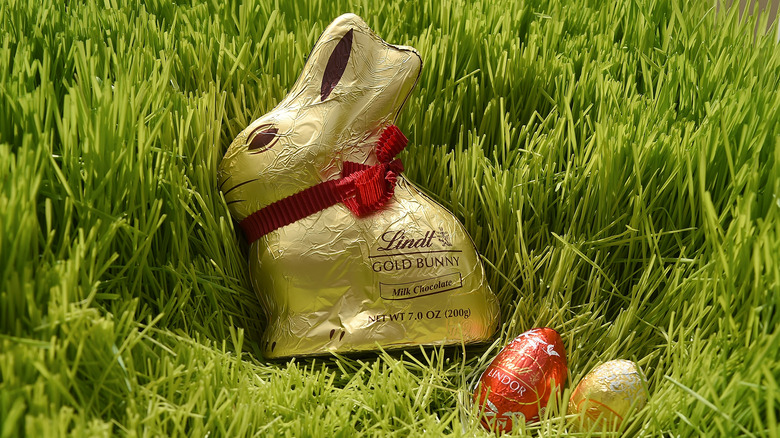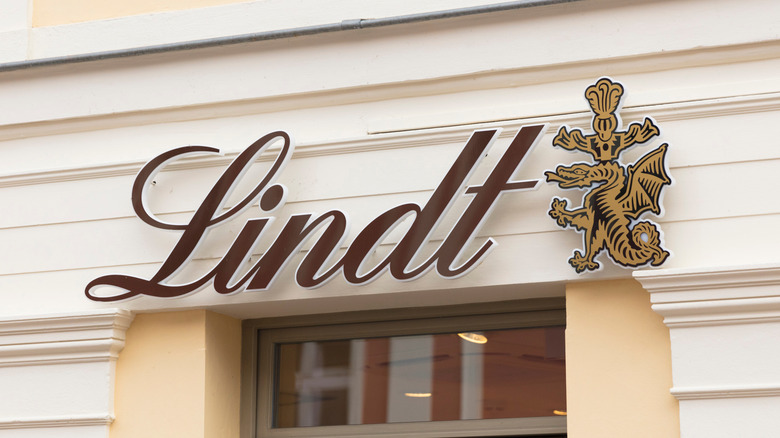Why This Swiss Court Ruling Left Chocolate Maker Lindt A Happy Bunny
Lindt is very proud of its decades-old gold chocolate bunny and with good reason. The legendary chocolate maker says the gold bunny was created by one of the firm's master chocolatiers when his daughter saw a real bunny during a traditional Easter brunch that ran away before the child could get close. The product itself was introduced to the German market in 1952, when Rodolphe Lindt perfected work on a machine that would allow chocolate to be processed until it was smooth, and then molded into different shapes, per Lindt.
Since then, the image of the ribboned gold bunny has become so intertwined with the Lindt brand that a Swiss court has said it "deserve[s] protection from copycat products," per CNN. That protection includes ensuring no one makes chocolate bunnies wrapped in gold foil — including Germany discount retailer Lidl, who went to market with its own chocolate rabbit treats.
The Northamptonshire Telegraph says Lindt fired the first shot in this battle of the chocolate bunnies in 2018, when the company said Lidl's gold bunny and its own looked so similar, customers would get confused. But, a Swiss commercial court rejected Lindt's claims in 2021, allowing Lidl to keep its confection.
Lindt won the case on appeal
Nevertheless, Lindt persisted, and the case eventually went to Switzerland's highest court in Lausanne — who went on to overturn the previous court's ruling and decide the case in Lindt's favor. In a statement, the Federal Supreme Court of Switzerland said: "Given the overall impression produced, Lidl's bunnies arouse obvious associations with the shape of Lindt's," and that, "In the public mind they can not be distinguished. It can be considered common knowledge that the shapes that Lindt & Sprungli has had protected by trademark law are associated by a very large part of the public with the Lindt & Sprungli company," per Northamptonshire Telegraph.
Lidl has since been ordered to destroy its inventory of gold bunnies, although that didn't mean the chocolate couldn't be melted down and sold in another form, because "Destruction is proportionate, especially as it does not necessarily mean that the chocolate as such would have to be destroyed," the Swiss Federal Court said, per CNN.
This is not the first time Lindt has picked up a legal sword to defend itself and its bunny from intellectual property marauders. The National World says that, while the Lindt bunny was granted trademark status in 2001, it hasn't stopped other companies — such as Australia's Hauswirth in 2011 — from trying to create their own version of the bunny.

